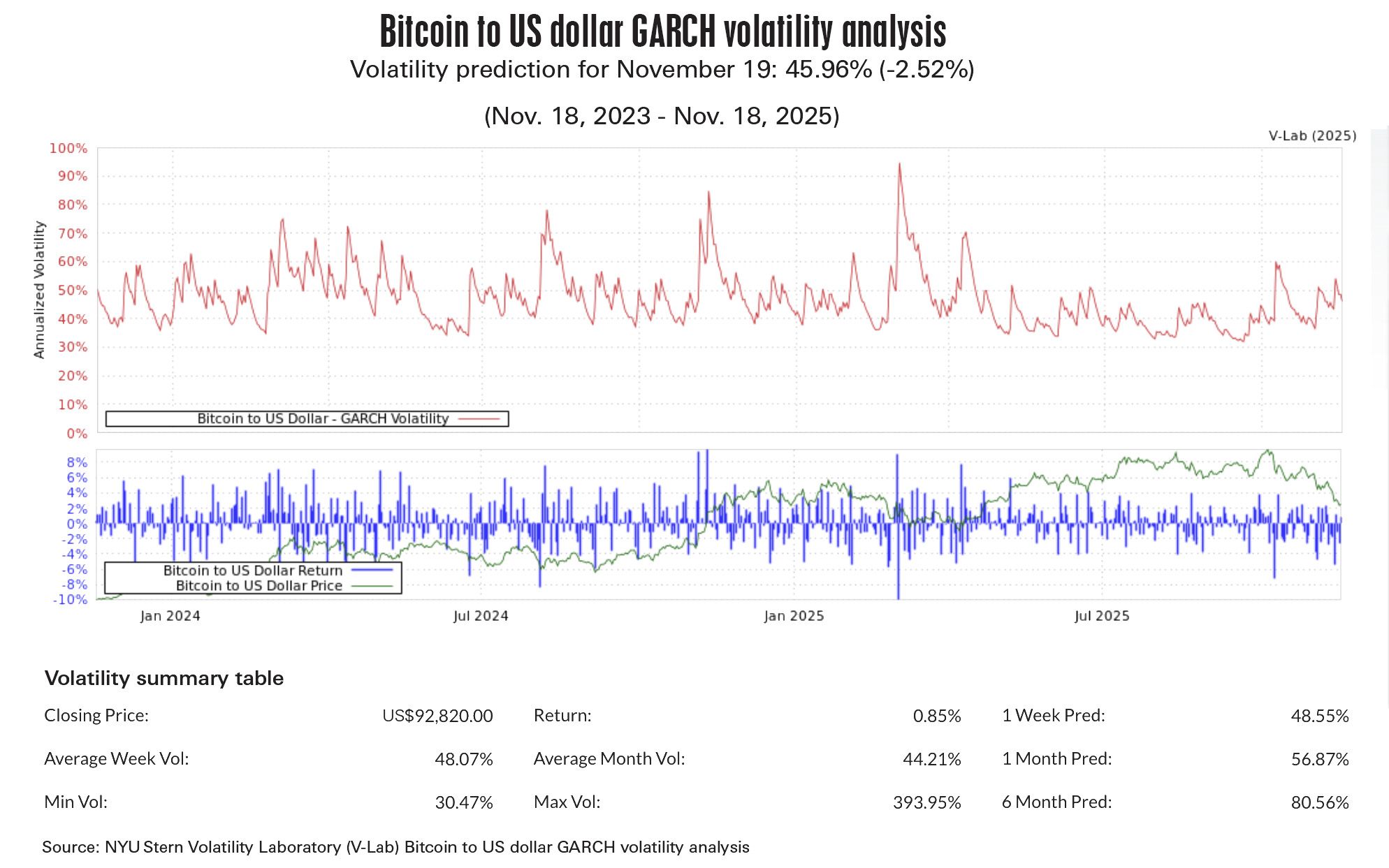

Bitcoin’s extreme volatility continues to deter many private-wealth investors and family offices from fully embracing the cryptocurrency. However, interest in the asset class is still growing, albeit cautiously.
While forecasts ( or hypotheticals ) for Bitcoin point to price swings of 25% or more from its recent highs, the psychological and practical discomfort it engenders among conservative allocators is real. At present, Bitcoin exhibits two to three times more volatility than gold, and three to five times compared to global equities, according to the Bitcoin to US Dollar GARCH Volatility Analysis.

For an investor whose mandate is capital preservation, this means drawdowns ( and upside swings ) are much larger and more frequent.
In BNY’s 2025 family office survey, 74% of respondents say they are investing in or exploring cryptocurrencies. A separate survey from Citi shows that 25% of family offices are considering direct holdings of cryptocurrencies ( including Bitcoin and Ethereum ), while 29% prefer crypto-linked investment vehicles like exchange-traded funds or private funds.
Familiar route
This suggests that many family offices prefer more structured, familiar access to the cryptocurrency, rather than raw, direct crypto exposure.
For family offices whose primary mandate is wealth preservation rather than pursuit of outsized returns, such drawdowns can be especially painful.
These investors often manage inter-generational capital and prioritize stability. A rapid, steep decline in value, or even the prospect of one, can erode confidence, especially for committees that are accountable for long-term capital protection.
Unlike some institutional players that may use derivatives or hedging strategies to absorb volatility, many family offices are less equipped ( or less willing ) to take that route.
Tailored solutions
That said, it's not a total rejection. Some ultra-high-net-worth families are increasing allocations, though often via structured or private-market vehicles rather than direct spot exposure.
This dynamic has driven the emergence of more tailored crypto-wealth solutions. Wealth managers and platforms are now offering buffer or principal-protected structures, allowing exposure to the asset’s upside while controlling the downside.
White-labelled solutions from trusted banks and integration through traditional private-banking channels are helping bridge the gap. In regions like the United Arab Emirates, where ultra-rich families are already active in crypto, the top concern cited remains volatility – along with regulatory and custody questions.
At the same time, some data suggest Bitcoin’s volatility may be gradually moderating.
But for now, until more risk-mitigating tools proliferate or the price behaviour stabilizes, many private-wealth allocators are likely to remain cautious.
This doesn’t preclude small or diversified crypto allocations, but it constrains broader “mainstream” adoption via direct spot exposure – even as institutional interest accelerates.